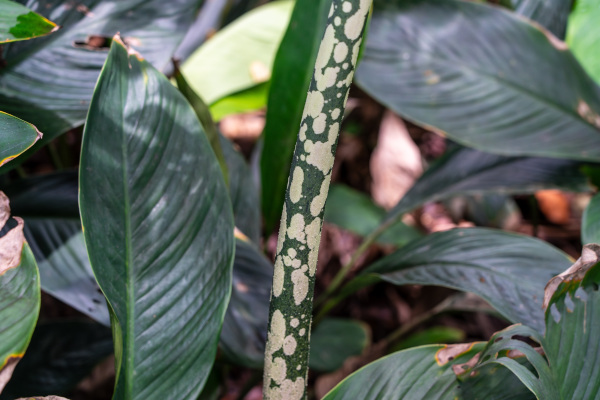How to grow Dracunculus
Dracunculus, common name Vampire Lily is a spectacular sight and ‘fragrance’ for the garden. An intriguing focal point, the impressive, unique magnificence is displayed throughout late spring and summer.
There are 2 species of its genus within the Araceae family – also known as the Arum.
A tuberous perennial whose arum shaped flowers are enormous (up to 40cm tall), characterised by a large spathe and long spadix which is pollinated by flies. To attract flies its fragrance is foul, like rotting meat for the first few days.
Its foliage growing to about 90cm is attractive mid green with silver lines along its veins and grows up to 30cm wide on fleshy stems with mahogany patches.
Once pollinated the spadex is covered in berries which turn to red orange when ripe.
Also known commonly as the Voodoo Lily, or Dragon Arum, this herbaceous, tuberous perennial is easy to grow, dying down to become fully dormant in winter. Regrowing in spring providing it’s not sat in the wet and cold overwinter.
All parts of Dracunculus are harmful if eaten to humans and pets and also a skin and eye irritant. Wear gloves and protective equipment when handling.
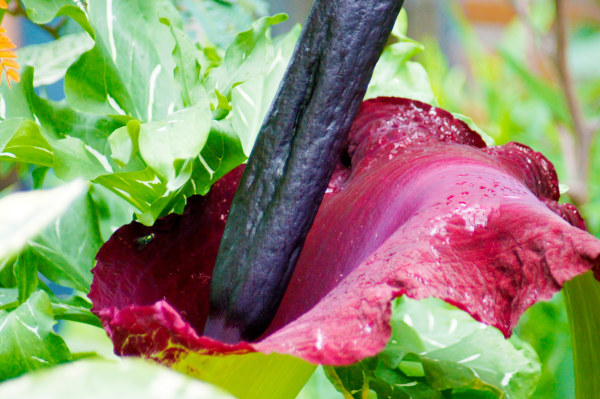
Key Information
Soil pH
Position
Hardiness

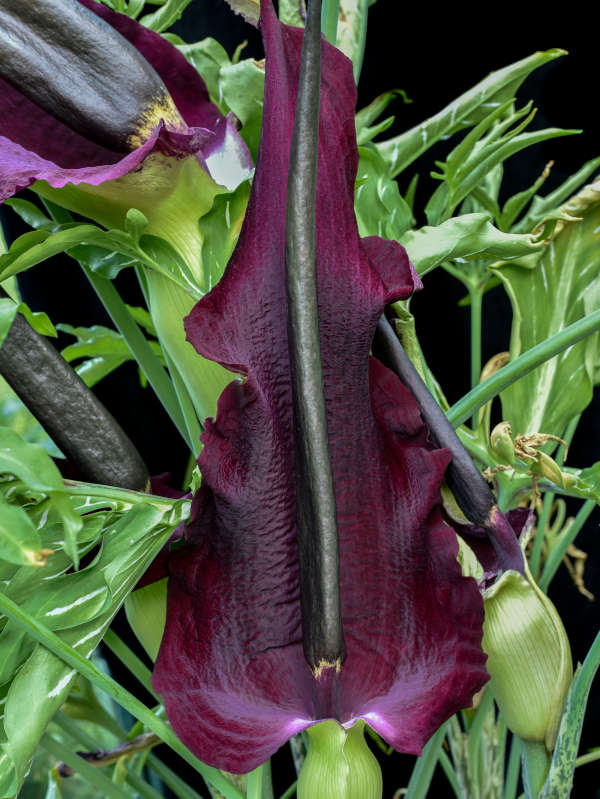
Where & when to plant Dracunculus
Position - Full sun or partial shade.
Soil - Moist free drained humus-rich soil/. Will grow in chalk, clay, sand and loam. Preferably soil that dries out in summer and does not sit wet in winter.
Flower - Spring to Summer.
Hardiness - H3 (-1°C to -5°C). Hardy in coastal and relatively mild parts of the UK.
Dracunculus are best planted in moist, well-drained soil of sand, clay, loam or chalk within a neutral, acidic or alkaline PH balance.
Plant the tubers in autumn or spring, with the flat side facing upwards, approximately 15cm deep, leaving plenty of room for the optimum spread to be reached. If planting in heavy clay, add a handful of horticultural grit to the bottom of the hole to aid drainage.
Also happy to be grown in large containers with good drainage, so can be moved and enjoyed in varying areas. If container grown plants are planted out during the active summer growing season make sure that they are watered regularly until the plant has settled into its new location. Water at soil level rather than the foliage.
Please note that Dracunculus will begin to go dormant in late summer. Foliage will collapse and die back to a tuber stored below soil level until the following spring. It is still suitable to plant dormant plants.
Dracunculus are ideal for tropical planting schemes, or in cottage gardens on banks and slopes.
Dracunculus perform best in an area of full sun but will also tolerate regions of part shade and will grow well within a sheltered woodland or at the base of a sunny wall. The flowers make unusual and long lasting cut stems for your indoor arrangements.
How to plant Dracunculus
- For planting in the garden, dig the soil area removing any large stones and weeds and breaking up any lumps. Mix in some organic matter, ideally leaf mould, though manure or garden compost are also fine. Rake level and firm with your heels. Rake level again.
- Water plants well and allow to drain before planting.
- A good tip is to dig a hole twice the size of the root-ball. Fill with water and allow to drain before placing in the plant which is especially good for summer plantings.
- Remove the plant from its pot placing the plant in the hole, ensuring the top of the root ball sits level with the surface of the soil. Too low and the plant may rot, too high and the roots can dry out. If bare root hold the plant by its crown and plant 15cm below soil surface level.
- Backfill with soil and firm in gently with your foot.
- Soak soil well with water.
What to plant with Dracunculus
Outdoors, grow alongside plants with different shaped or coloured foliage as a contrast, whilst also making sure nearby plants give interest when dracunculus are dormant.
Being distinctly tropical and dramatic, continue the exotic feel by growing with Callistemon Mini Red, or under the long leaves of Banana Musa Basjoo with Fritillaria imperalis maxima Rubra beneath.
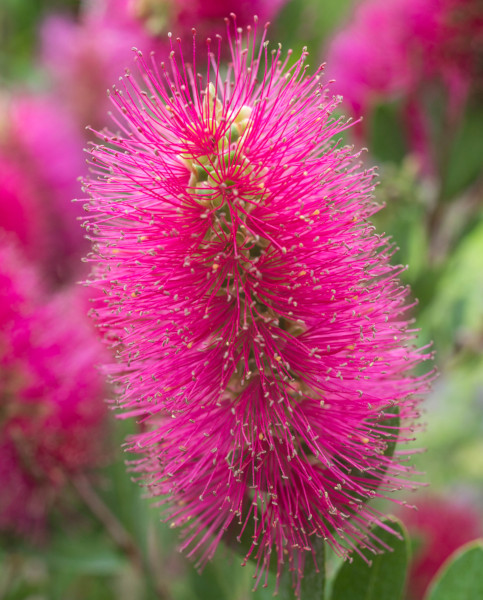
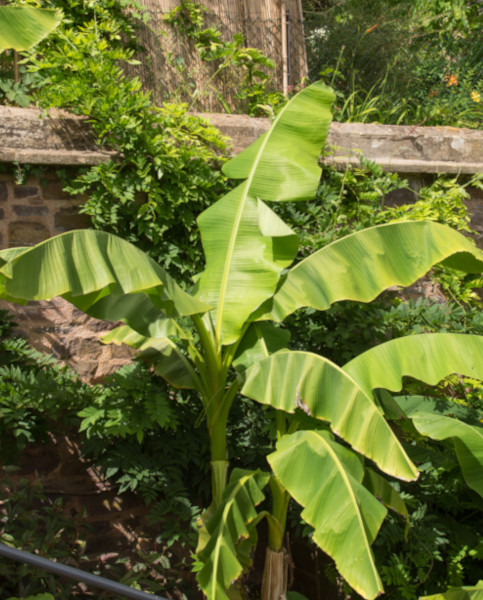
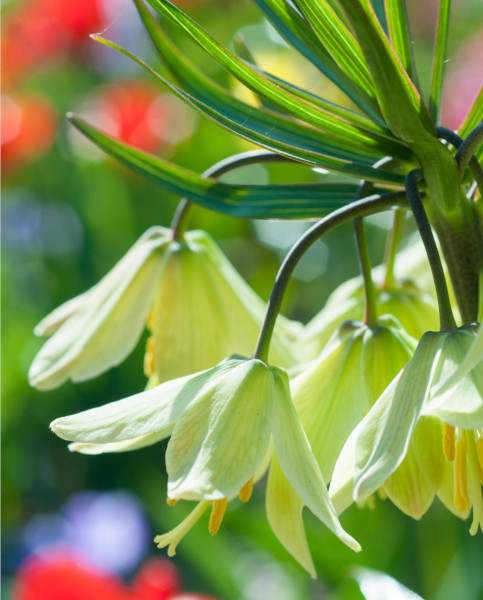
How to care for Dracunculus
Pruning and Deadheading
Dracunculus needs no pruning or deadheading. Simply when finished its growing season in late summer to early autumn gently tidy away decaying growth in autumn. Ensure you wear suitable protection as is sap is an irritant.
Watering
On planting outside, they benefit from a good watering in on planting and then regular soakings until established. After this they shouldn’t need watering preferring a dry site in summer once established.
Feeding
On healthy, fertile soil, a mulch of well-rotted organic matter (i.e., a layer of leaf mould, manure, or garden compost applied to the soil around the plant) should provide enough nutrients for your dracunculus. This has the added benefit of suppressing weeds and locking in moisture. Mulch when planting, and then again each spring.
If you garden on poor soil or your dracunculus looks in need of a boost, check it’s NOT overwatered which could be the issue – then apply a granular general purpose feed to the surface of the soil and lightly working in can reap benefits. This is known as a top dress and should be done when you’re mulching in spring – first apply the feed, then cover with the mulch.
Cold Protection
Dracunculus are hardy garden plants on soils which are not waterlogged in winter. In colder areas protect the crown by applying a 20cm thick dry straw mulch.
Pests and Diseases
Dracunculus are generally pest free.
How to propagate Dracunculus
The recommended way to propagate dracunculus is by root division of its bulbous off sets.
When your plant is at least 3 years old and has been growing well in the previous season you should be able to divide the root structure into more plants during late autumn or early spring
- Make sure the plant is not suffering from drought, pest or disease. Wait until the growth has died down in autumn.
- Lift plants carefully by digging all around its crown with a fork.
- Shake off excess soil so you can clearly see the roots.
- Carefully segment its bulbous offsets.
- Either replant the bare root and bulbous off sets back into the garden as described in Planting in the Garden section or plant root sections into a 1 litre pot. Ensure the crown is 10cm below surface level.
- Water well and leave.
- The dracunculus should show signs of life in spring.
* Many plants carry Plant Breeders Rights and cannot be propagated for commercial purposes.
Common Dracunculus questions
Do dracunculus spread?
They don’t spread freely, yet some birds can eat the poisonous orange berries produced after pollination. The birds digestive system removes natural growth inhibitors supressing its germination. This is why you can sometimes find these plants in your garden having not planted them.
Do dracunculus come back every year?
Yes dracunculus are herbaceous perennials. In spring they grow, flower and become fully dormant by late autumn ready for regrowth the following spring.
